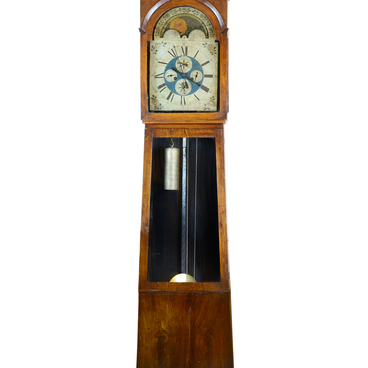In the second half of the 19th and early 20th centuries, a whole “national” trend emerged in Russian jewelry art. Factories and workshops created cutlery, tea and coffee sets, decorative objects made of silver, in which they copied and processed motifs from folk and ancient Russian art. Antique Russian tableware was reproduced in silver: bratinas (wine bowls), stopas (wine glasses), bowls, charkas (cups). Along with the techniques of casting and embossing, enamel and niello began to be used, as well as the traditional for the pre-Peter times filigree, in which products were created from twisted wire.
Experts call the style in which the master decorated the cup-dipper from the museum’s collection neo-Russian. It combined features of Art Nouveau and Old Russian style: flowing lines, abundance of ornaments, geometric patterns in the form of waves, triangles, scrolls and drop-shaped elements.
The dipper (kovsh) came to the museum from the property of the repressed Nikita Melikov. It was made in 1908 — 1917 at the famous Moscow Silverware Factory of Feodor Rückert.
Feodor Rückert (Friedrich Rückert) was a Russian jeweler of German origin, a master enameller. He was born in the region of Alsace-Lorraine (now the territory of Eastern France), and in his youth he moved with his parents to Russia.
In the 1880s, Rückert worked in the Moscow jewelry firm of Ivan Khlebnikov. In 1882, at the All-Russian Art and Industry Exhibition, Rückert received a gold medal for his pieces.
In 1886, the jeweler left the firm of Khlebnikov and opened a workshop in his own house (today it is house 29 on Vorontsovskaya Street). From 1887 to 1917 he produced items for the Moscow branch of the firm of Carl Faberge, the jeweler businessman Orest Kurlyukov, and also the merchant and philanthropist Joseph Marshak. Tatiana Muntyan, an expert on Russian jewelry, wrote:
Experts call the style in which the master decorated the cup-dipper from the museum’s collection neo-Russian. It combined features of Art Nouveau and Old Russian style: flowing lines, abundance of ornaments, geometric patterns in the form of waves, triangles, scrolls and drop-shaped elements.
The dipper (kovsh) came to the museum from the property of the repressed Nikita Melikov. It was made in 1908 — 1917 at the famous Moscow Silverware Factory of Feodor Rückert.
Feodor Rückert (Friedrich Rückert) was a Russian jeweler of German origin, a master enameller. He was born in the region of Alsace-Lorraine (now the territory of Eastern France), and in his youth he moved with his parents to Russia.
In the 1880s, Rückert worked in the Moscow jewelry firm of Ivan Khlebnikov. In 1882, at the All-Russian Art and Industry Exhibition, Rückert received a gold medal for his pieces.
In 1886, the jeweler left the firm of Khlebnikov and opened a workshop in his own house (today it is house 29 on Vorontsovskaya Street). From 1887 to 1917 he produced items for the Moscow branch of the firm of Carl Faberge, the jeweler businessman Orest Kurlyukov, and also the merchant and philanthropist Joseph Marshak. Tatiana Muntyan, an expert on Russian jewelry, wrote:



